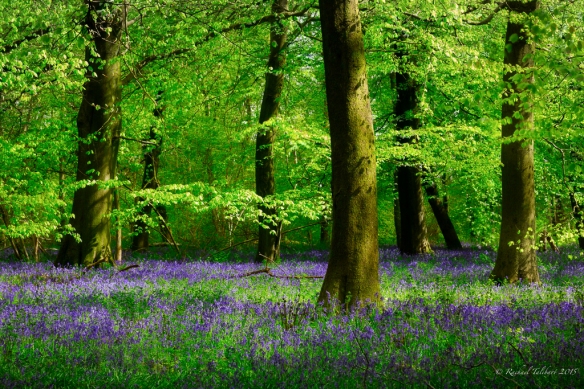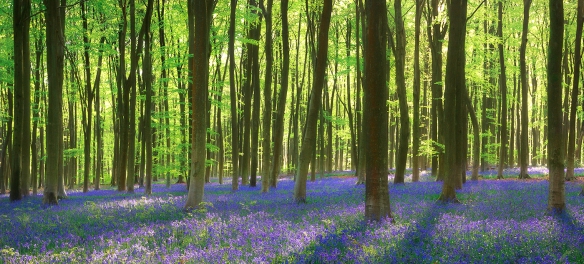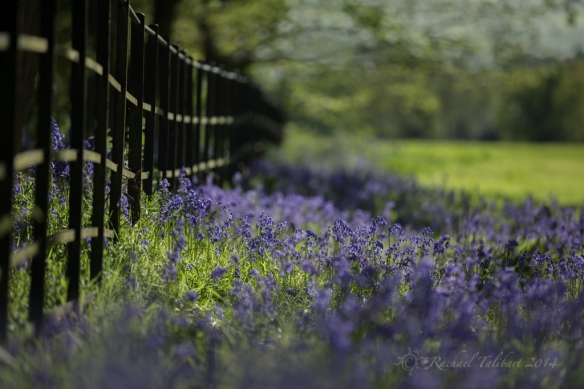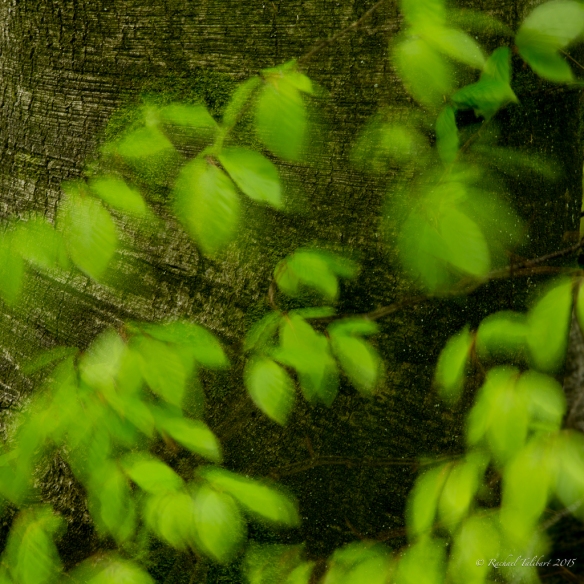I have spent much of the last two weeks out and about in our local landscape capturing images of bluebells. Nearly 50% of the world’s bluebells (Hyacinthoides non-scripta) grow in the UK. Every Spring, for about two weeks, ancient woodlands are carpeted in nodding azure bells. If the Japanese go out in droves to appreciate cherry blossom, we Brits do the same for bluebells.
Of course, they are irresistible to the landscape photographer. But capturing pleasing photos of bluebells is harder than you might think. The temptation is to go wide, to capture all the majesty of the forest, but this tends to exaggerate the distance between the flowers, minimising the profusion that attracted your eye in the first place. So a longer focal length, that compresses distance, is often the better solution.
Finding a strong composition can be challenging. Paths, the more winding the better, create shapes that led the eye into and through the frame.
Colour balance is also tricky. I often see comments on-line that either praise or criticise bluebell pictures for the way they reproduce the colour of the flowers: ‘nice to see proper blues” is typical. But bluebells actually look different depending on the light.
In sunlight or at certain times of day (golden hour, for example) they take on a mauve/magenta tint. Pre-dawn or in shade, they appear more blue. Equally, the fresh spring leaves of the trees under which the bluebells grow, especially beech, have a strong, almost acid-green colour, that can look over-done to people who have never properly looked at the real thing.
It’s always a good idea to try different apertures. Landscapers tend to favour narrow apertures to achieve ‘front-to-back’ sharpness. But, sometimes, using a wide aperture to narrow your depth of field can provide a more pleasing image, just picking out a detail and allowing the rest of the scene to become a blur.
Speaking of blur, on breezy days it’s worth experimenting with shutter speed to capture some movement in the flowers or the leaves of the trees.
In a wide view, it creates a subtle. dreamy feel. Closer up, more abstract images can be made.
There are other ways to record movement. Intentional camera movement, or “ICM”, is very on-trend at the moment. Put simply, the camera is moved while the shutter is open. The result, when it works, is a painterly, semi-abstract rendering of the subject. The technique suits woodland because it tends to simplify, which can be helpful in cluttered forest scenes.
One must be prepared for a lot of out-takes when using ICM, but it’s all fun and in the spirit of experimentation. I find that it helps to choose scenes where there are bold shapes, like tree trunks, to give your image structure. Without them, ICM images can become a formless jumble. I also like images where there are still some recognisable details within the blur, as in these extracts from the above image, where an oak leaf can be recognised…
… and, below, where the frill from a single bloom emerges (bottom right) from the blue haze.
Equally in vogue, making multiple-exposures in-camera can have unexpected and pleasing results. Many modern digital cameras make this simple. I used my Fuji X-E1 for the shot below. The image on which you are going to superimpose a second shot is shown in live view under the picture you are now taking, enabling you to visualise exactly what you are going to achieve. This image features stitchwort, tiny white flowers I found growing among the bluebells at a local copse on Tuesday.
Bluebell season is mostly over now, but it will surely return to delight us all again next Spring. I think it’s lovely that the Japanese have a word for their national cherry-blossom gazing, ‘hanami’. Perhaps we need to invent one for bluebells. Any suggestions?














Excellent lessons!
Thank you very much, David. Sorry for the very late reply.
Excellent Essay. This is good subject coverage!
Thank you very much, Eduardo. Sorry for the very late reply.
Fired up my enthusiasm to try some different shots. Amelia
Thank you very much, Amelia. Sorry for the very late reply. Hope your garden is flourishing!
It’s been a good year for the garden despite the heat this year. Funny to be complaining about the heat and the sunshine!
Beautiful photographs and interesting reading
Thank you very much, Terri. Sorry for the very late reply.
These are beautiful. Great learning some of the techniques photographers use to get more creativity out of their shoots. Really like the feel of the ICM shots – almost haunting. Great work, Rachael.
Thank you very much, Jaina. Sorry for the very late reply. I hope you are managing to get some nice shots in your new location?